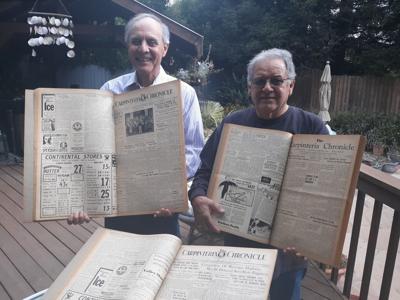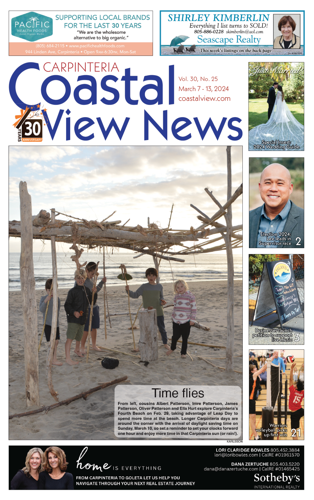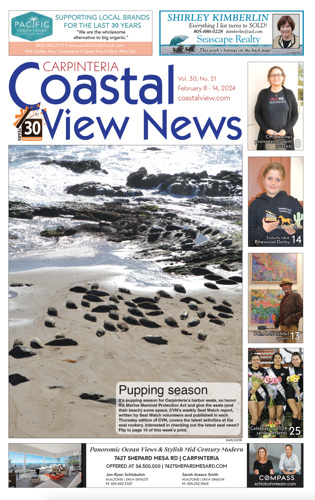[Editor’s note: A version of this article was run in CVN Vol. 26, No. 18.]
Joe Escareño, Jr., and his sister, Barbara, were cleaning out their aunt’s garage – Jessie Dominguez’s, who passed away recently – when they came across three near-complete volumes of the Carpinteria Chronicle. These were Volume I (1933-34), Volume II (1934 only), and Volume VI (1938-39). Their first instinct was to trash the old newspapers, but fortunately for Carpinteria and California history, they quickly reconsidered and gave their childhood friend, Jim Campos, who has co-authored two books on Carpinteria history, a look at their discovery.
By consensus, they decided to donate the Chronicle to an institute that would preserve and make the old newspapers available to the public at large, free of charge. UC Santa Barbara met the criteria. The Chronicle can be viewed online at alexandria.ucsb.edu/collections by searching Carpinteria Chronicle.
The discovery of the Chronicle, until now almost entirely lost to history, reminds of the education and pleasure derived from revisiting the community’s past. For example, on this the 100th anniversary of the Volstead Act in 1920, the end of Prohibition in 1933 was particularly big news in the Chronicle. Carpinteria had voted in 1874, 64% in favor of being a “dry” community. Even though the State Supreme Court nullified the decision within a week, public opinion was decidedly against the consumption of alcohol throughout its early history. There is a sense of a conflicted community in the Chronicle coverage of liquor sales arriving at the train depot for distribution at various locations where one could BYOJ (bring your own jug).
Among other topics to be consumed by getting online to read the Chronicle: the construction of what is today known as the St. Joseph Chapel on Seventh Street in 1934, the themes of local elections, and the building of the Aliso and Main elementary schools. The Chronicle will have much to contribute to future CVN Throwback stories.



















(0) comments
Welcome to the discussion.
Log In
Keep it Clean. Please avoid obscene, vulgar, lewd, racist or sexually-oriented language.
PLEASE TURN OFF YOUR CAPS LOCK.
Don't Threaten. Threats of harming another person will not be tolerated.
Be Truthful. Don't knowingly lie about anyone or anything.
Be Nice. No racism, sexism or any sort of -ism that is degrading to another person.
Be Proactive. Use the 'Report' link on each comment to let us know of abusive posts.
Share with Us. We'd love to hear eyewitness accounts, the history behind an article.